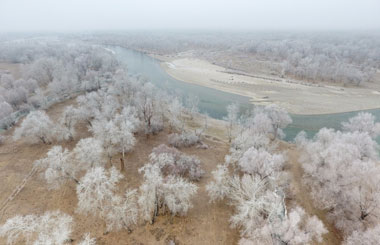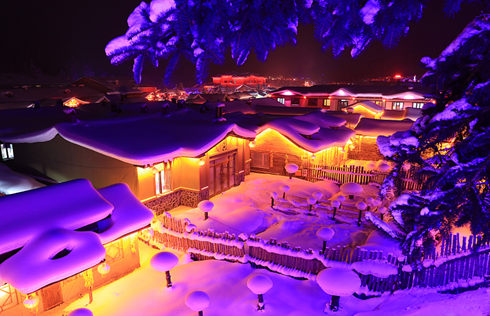A golden twilight
"They are the soil and root of traditional Chinese culture and lifestyles. If the Forbidden City represents imperial history, then these shabby houses represent an ancient way of life for ordinary people."
But for local officials, preserving these abodes scattered around the countryside is more difficult than protecting the 72,000 square-meter Forbidden City.
Official Xu Lefeng is in charge of safeguarding old houses in Yubei village, one of the best-preserved historic villages in Nanxijiang, as five mountains surround and protect it from war and natural disasters.
"Residents want their lives improved by modernizing and upgrading the houses," Xu says. "But historical architecture cannot easily be refurbished according to regulations."
Since being appointed a national historical site since 1988, the Nanxijiang area has been protected from problems like factory pollution, unlike other rural areas in the highly industrialized Yangtze River Delta area.
But this also means both the local government and residents have been unable to reap the fruits of development.
With more than 30 houses and 40 residential compounds, Yubei village was once the hometown of the largest number of scholars and central government officials in ancient China.
While some of the village's workshops produce cotton, oil and dyed cloth, most of the buildings are in a state of disrepair.
"To protect the houses, you must let the residents living in the house see the benefits. They don't care about history or heritage, as for them a better life is the priority," Xu says.
Wang Fu, a 73-year-old Yubei villager, says he has lived with his sons and grandsons in a 15-square-meter, one-floor house, for decades. Because the house is too small, the sons, who are migrant workers in cities, do not return home for union during the Spring Festival.
But several kilometers away, at Linkeng, a solution has been found.
At this small village of about 500 people, 90 percent of the houses function as both budget hotels and residences.
In 2011, the idyllic landscape and lifestyle of the village drew 130,000 tourists, rich pickings for the farmers.
"It turns out that it is possible to have your cake and eat it too," a Linkeng village official surnamed Lin says.
But not everyone agrees.
"During the process of such development, native and authentic traditions are lost to meet the demands of tourists," architecture professor at Tsinghua University Chen Zhihua says.
Chen has spent the past two decades studying the evolution of ancient villages in Nanxijiang. And he believes tourism is not the way forward.
"When I first came here in the 1980s, I was greatly impressed by the simplicity, primitiveness and even roughness of life here," Chen says in the preface of his book, Midstream of Nanxijiang, which talks about the decline of ancient villages in Nanxijiang.
"People may say it's no big deal because that's just the way most of our ancestors lived, but that's exactly the reason it's a big deal. It's vanishing at such a speed that in the next few years, our kids, grown up in high-rises and along highways may no longer be able to see the ancient lifestyle," Chen argues.
Contact the writer at xujunqian@chinadaily.com.cn.


















